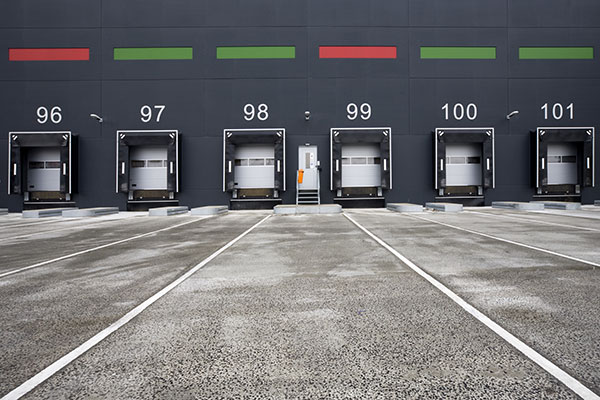Social Distancing & the Supply Chain
How digitizing supply chain documentation can keep drivers and facility staff safe while generating up to 30% in annual labor savings.
COVID has changed how we look at everything from the way we purchase groceries for our family to the interactions we have with strangers and friends alike on a sidewalk near our homes. Some restaurants and stores are now refusing to accept cash as a way of protecting their staff from a virus which has changed how we go about our daily lives. Cash might be king during a pandemic, but the paper we touch creates anxiety and a possible transmission point.
That anxiety around physical exchange of documents is why many shippers and warehouses are now recalibrating the very workflows their businesses were built on. The fact that a truck driver entering a warehouse can now cause a multi-million dollar disruption to a global supply chain has been the catalyst for a myriad of patchwork safety solutions, few of which have properly protected facility staff or ensured driver safety. The stop gap measures that were enacted early on by warehouse managers to protect their staff and create physical distance during the pandemic are now being re-evaluated to sustain an enterprise.
Drivers have also shared a common experience, treatment like lepers, with makeshift plexiglass barriers, blockaded building entries, forced confinement in their cab, denied bathroom access, and requests for a paper bill of lading denied. It’s become a struggle to perform their job, as it has even become a challenge to inspect the safety of a load while adhering to ever-changing safety protocols that are vastly different from one facility to the next.
Whether signing a bill of lading at the shipping office or grabbing a cup of coffee from the drivers’ lounge, there’s a real danger of viral shedding and both important processes and basic hospitality have been shrugged off. It’s now clear the first interaction point of a transport driver pulling up to a guard shack or a transportation office within a supply chain, must include minimal contact with physical items as well as strict social distancing.
So, what does physical distancing look like at the guard shack once that gate is raised? For MacGregor Partners, the solution is M.Folio. M.Folio is enterprise document management software paired with freestanding driver kiosks that enable truck drivers to self identify with a driver’s license and some basic information about their load.
The driver kiosks replace physical interaction with your staff. All drivers check-in on a kiosk and are then directed to the proper location in your yard to either receive the load or await further instruction via SMS text message. All bills of lading are signed electronically at the kiosk or on a mobile device like a tablet on your loading dock, or even on the driver’s cell phone. And it’s not just bills of lading, but any supply chain document that is vital to the transport of that specific load. All documents scanned, archived, and available for all interested parties. Fully searchable for years into the future at the click of a button and eliminating a search through filing cabinets and bankers boxes for a bill of lading or other requested document. This entire workflow happens in real time with the goal of keeping those trucks moving.
For years prior to the pandemic, document digitization solutions have delivered real-world labor savings and ROI through improved visibility, searchability, and streamlined workflows. Beyond eliminating human-to-human interaction and the exchange of transportation paperwork in distribution and manufacturing centers, document digitization also drives significant savings across back office functions and opens the door to workflow automation. As an example, a Fortune 100 Food & Beverage company recently reported a 25% transportation back office labor savings after digitizing their bills of lading, creating an enterprise-wide visibility portal, and automating their paper-based workflows. M.Folio users typically report a 20-30% labor savings in these areas. (See how much cost savings you can realize with the M.Folio Savings Calculator. The tool provides a conservative entrypoint to real savings.)
While digital documents are easier and more cost-efficient to store, search, access, and share, there are still times when paper is preferred or even required. For drivers and carriers wanting a printed bill of lading, M.Folio can generate a signed paper BOL when necessary. A paperless BOL can also be emailed or texted to the driver for signature and safekeeping.
Currently dozens of facilities across North America already use M.Folio and driver kiosks to social distance and safeguard their supply chain. While the solution doesn’t solve every problem in the warehouse caused by COVID, it does redefine the relationship between receiver, shippers, drivers, and documentation for the new reality. Most importantly, it keeps drivers and facility staff safe and efficient, while protecting business continuity.













